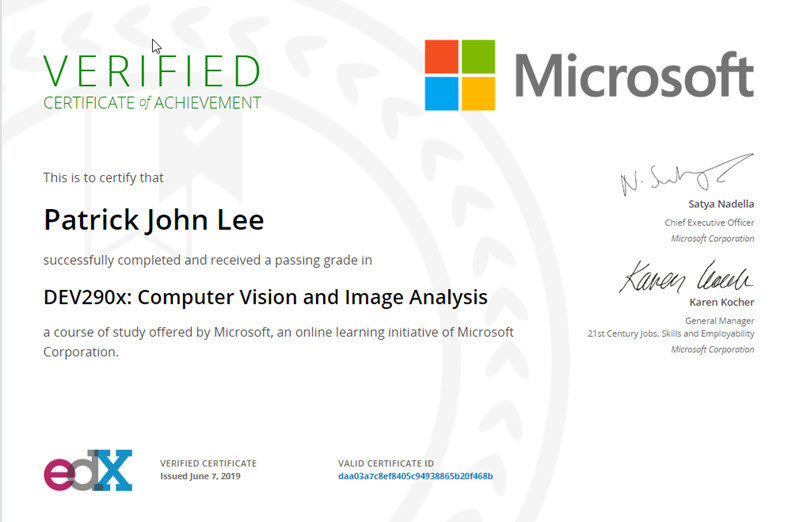
I just completed Microsoft's Computer Vision and Image Analysis course
by Patrick Lee on 08 Jun 2019 in categories BigData tech with tags AI CNTK Jupyter notebooks lifelong learning PythonI recently completed the above Microsoft/edX course (full details of the course are here) with a final mark of 92%. This was my 8th course on the Microsoft Professional Program for Artificial Intelligence. I plan to do my 9th course (Reinforcement Learning Explained) during the rest of this month, and then the final capstone course in July. The capstone course is meant to be a real world test of doing AI work, applying knowledge learnt in the earlier courses.
This course was all about image segmentation (the ability for a computer to recognise the existence, location and class of different types of objects in an image, e.g. cars, buses, lane markings and pedestrians in an autonomous car application) and deep segmentation, the foundation of scene understanding (the ability of a computer to understand to what object in an image every pixel in the image belongs).
It seems that since about 2012, deep learning models (AI neural networks with many layers and parameters) have been outperforming traditional methods requiring human intervention (such as Viola Jones and Histogram Oriented Gradient also known as HOG) in vision processing problems.
Another major incremental step in vision processing is the process of transfer learning, where a deep learning model trained on one task (e.g. recognising one set of objects) can be reused in the same or similar problem domain on a different set of objects. This is because the earlier layers of the model normally enable it to recognise general features of objects (such as edges, corners) and it only needs to learn how to amend its final layers to recognise the specific features of the new set of objects.
The course required using Python and the computer vision part of the Microsoft Cognitive Toolkit (CNTK) in Jupyter notebooks in Microsoft Azure.